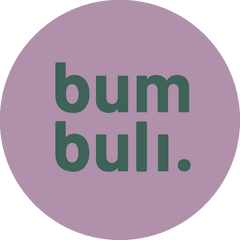Recently, while I was writing this text and still convinced that I would not know anyone who didn't use terry towels, a friend of mine proved me wrong - she said that she had waffle piqué towels. So now I formulate more carefully: MANY towels, bathrobes and other home textiles are made of terry like our "Little Bathrobe".
TERRY OR TERRY TOWELLING?
The term terry originally comes from the French: "terry" means something like "rubbing" or "rubbing off".
Colloquially, the term terry is usually used, but there is also a higher quality variant - terry. If you are precise, these two terms do not designate a type of fabric, but rather a certain type of processing.
With terry, the yarn is a so-called effect yarn. This means that the loops that are visible in the finished fabric are produced solely by the yarn used (loop yarn). Furthermore, the loops are only on one side of the fabric.
Terry, in contrast, has loops on both sides and is therefore even denser and more stable than terry. A special loom is needed to produce the loops. Because here they are not created by the yarn used, but by the differences in tension in the thread systems during weaving. The loop pile is created by integrating a third thread system into the basic fabric, which works with less tensile force than the others, thus enabling loop formation.
WHERE DOES TERRY ACTUALLY COME FROM?
While the history of terry manufacturing in Europe is relatively well researched, the exact origin of terry is not really proven. Probably the process for making terry towelling was developed in the Near East or in Turkey, where it was discovered by an Englishman named Henry Christy, who was at the court of the Sultan of Constantinople around 1850.
Together with his brother he developed a towel with a kind of loop fabric on one side. They refined the manufacturing process of the novel fabric and quickly presented a solution for the machine production of the fabric. Even then the fabric was called "Turkish Towel" and even found its buyers at the English court.
WHAT IS SO SPECIAL ABOUT TERRY TOWELLING FABRICS?
Terry towelling fabrics are voluminous, relatively heavy and have a very good grip. After bathing or showering, we look forward to wrapping ourselves in this cuddly fluff and drying off.
Due to their surface structure of the many upright loops, they absorb moisture and humidity very well without getting wet immediately themselves.
This works best if the terry cloth is made of 100% cotton: The raw material cotton ideally supports these properties, as cotton fibre is a so-called hollow fibre and can absorb up to 11% of moisture without feeling wet. The hollow fibre is also responsible for the fact that cotton, for example, needs much more time to dry compared to man-made fibres: the water that is in the hollow space needs time to evaporate.
Terry is a so-called loop fabric. Since the loops are not firmly anchored in the fabric, they can grow or expand - e.g. by getting caught on pointed objects. This is due to the method of production and does not constitute a quality defect.
CARE FOR TERRY CLOTH PROPERLY
The need to take care of the clothes we buy and wear has become more conscious in recent years. Considerations of sustainable action and sustainable consumption not only include a more mindful approach to ourselves, the environment and our purchasing decisions, but also about how we treat the things we already own and which should continue to accompany us. The care of these products then also plays a major role here.
Terry towelling in itself is not a difficult material, but the better you take care of it, the longer you will enjoy it.
Terry should be washed once before the first use. This causes the base fabric to contract, which increases the loop strength somewhat and makes the fabric more resistant.
With terry towelling, pull threads or enlarged loops can sometimes form (e.g. by getting caught on pointed objects). Therefore, please make sure that no clothes with rivets, metal zippers or similar are washed along with the towelling. If enlarged loops are discovered, they should simply be cut off, the terry towelling will still retain its shape. Only do not pull out the threads, this will only damage the appearance.
If terry towelling becomes hard after washing, this is not due to the lack of fabric softener, but usually to our limy water.
The best way to get the lime out of the terry towelling is with a vinegar bath:
Vinegar mixture: mix one part water and 1/8 part vinegar essence (25%) in a tub (commercial vinegar is mixed with water in a ratio of 1:2). Soak the bathrobe in the vinegar mixture for half a day and then wash it normally in the washing machine. The vinegar smell is then no longer present and the terry cloth is soft again.
Fabric softener wraps itself around the cotton fibres and only ensures that the water beads off. Fabric softener has an adverse effect on towels or bathrobes made of terry towelling, as it has a negative influence on the absorbency - so it is better to avoid it.
The same applies to drying on a radiator - the fluffy terry can become brittle as a result.


